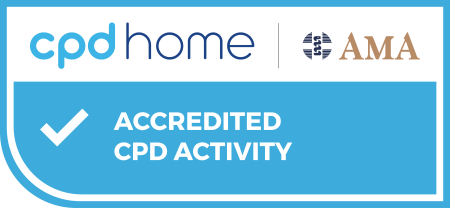Finding accredited CPD
The Suturing and Perfecting the Ellipse Plus Local Anaesthetic course provides a detailed exploration of essential skills for skin cancer surgery and related procedures. Guided by Prof. Tony Dicker, this course offers hands-on learning and practical insights into advanced surgical techniques. The course is divided into nine units, each focusing on critical aspects of suturing and surgical practice.
Unit 1: Tying Surgical Knots and Basic Suturing
Learn the foundational principles of knot tying and basic suturing, including:
- Correct techniques for square and surgeon’s knots
- Avoiding common mistakes such as granny and slip knots
- Hands-on practice on simulated skin (e.g., pork belly) to master surgical knot security and wound closure.
Unit 2: Local Anaesthetic
Explore the pharmacology and practical application of local anaesthetics:
- Understanding how anaesthetics block nerve signals and their safe administration
- Managing patient comfort and minimising pain during injections
- Addressing common issues, such as anaesthetic toxicity and buffering for effectiveness.
Unit 3: Diathermy and Electrosurgery
Understand the principles and applications of diathermy:
- Differentiating between electrocautery techniques such as fulguration and desiccation
- Using electrosurgery for tissue removal, vessel sealing, and minimising bleeding
- Safety considerations for patients with implanted devices, such as pacemakers.
Unit 4: Surgical Margins
Learn to plan and execute elliptical excisions with appropriate margins:
- Understanding clinical versus histological margins
- Guidelines for margins in melanoma, basal cell carcinoma, and squamous cell carcinoma
- Practical tips for achieving complete tumor clearance.
Unit 5: Practical Session Setup
Prepare your workspace and tools for practical sessions:
- Equipment needed, including marking pens, surgical instruments, and sutures
- Setting up a safe and efficient environment for practicing techniques on simulated skin.
Unit 6: Deep Sutures
Advance your suturing skills with techniques for deep wound closure:
- Utilising absorbable sutures for buried knots
- Techniques to ensure proper wound edge apposition and tension distribution
- Avoiding gaping or incomplete closures through precise suture placement.
Unit 7: Vertical Mattress Sutures
Master the vertical mattress suture for managing inverting wounds:
- Achieving wound edge eversion to enhance healing and minimize scarring
- Step-by-step guidance on creating evenly spaced sutures and securing knots.
Unit 8: Horizontal Mattress Sutures
Learn to use horizontal mattress sutures for delicate, thin skin:
- Preventing tearing and distributing tension along the wound
- Practical applications for areas like the back of the hand or other fragile skin sites.
Unit 9: Pulley Sutures
Refine your skills with pulley suture techniques:
- Closing tight wounds with evenly distributed tension
- Variations to improve efficiency and aesthetics in longer wound closures.
Unit 10: Marini Suture
This specialised suture technique is ideal for small, tight wounds where conventional sutures may be challenging. Content Highlights:
- Step-by-step guide on the Marini suture, emphasising precision in re-entering and exiting the skin at shallow and deep points
- Practical tips for achieving optimal wound puckering and closure without excess material under the skin
- Applications in daily practice for difficult-to-close wounds, enhancing both efficiency and cosmetic outcomes.
Unit 11: Running Suture
Learn the running suture technique, a time-efficient method for closing longer wounds. Content Highlights:
- Demonstration of starting and finishing knots, maintaining even tension across the wound
- Advantages of running sutures, such as faster closure and balanced tension distribution
- Practical considerations, including the risks of suture abscesses and when to avoid this technique.
This course combines theoretical knowledge with extensive hands-on practice to ensure participants develop proficiency in surgical techniques. By the end of the course, you’ll be equipped to confidently perform complex suturing, manage surgical margins, and administer local anaesthesia safely and effectively. Ideal for healthcare professionals involved in skin cancer surgery and other surgical fields.
Cost: $195
Suitable for: All degree qualified medical practitioners.
Study mode: 100% online
Disclaimer: Please note, once you click 'Register now' you will be leaving the AMA’s CPD Home website and entering a third-party education provider’s website. If you choose to register for this learning, you will need to provide some of your personal information directly to the third-party education provider. If you have any queries about how third-party education providers use, disclose or store your personal information you should consult their privacy policy.
Upon completion, your CPD activity record may take up to 4 weeks to be reflected on your CPD Home Dashboard.
You have to log in to see the content of this module.
Provided by
Accredited by
